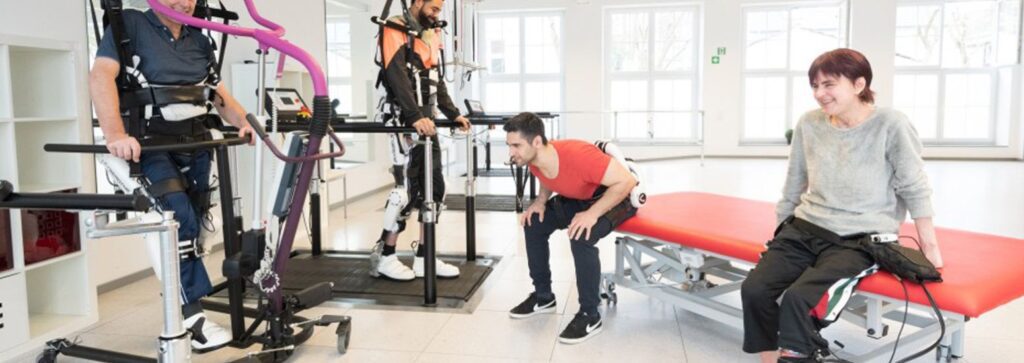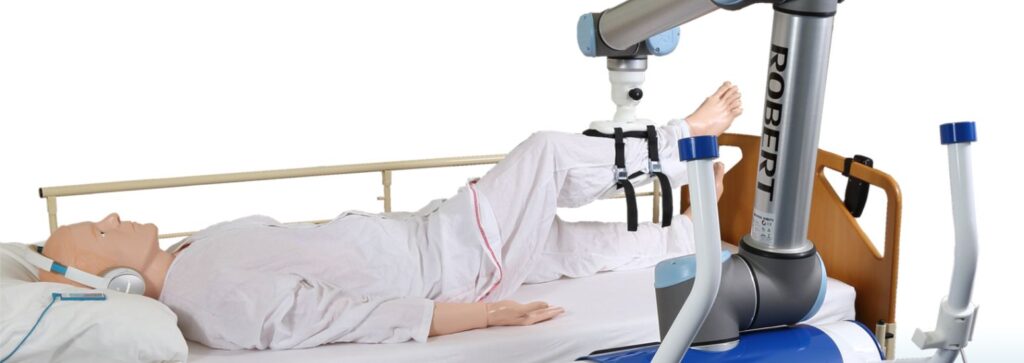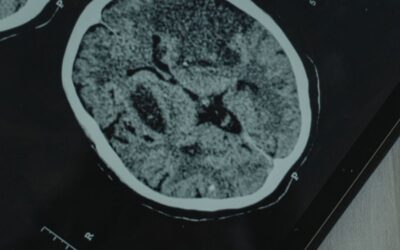ROBERT® represents an advanced rehabilitation robot designed to facilitate active resistive and assistive mobilisation of the lower limbs. It offers improved conditions for rehabilitation for both patients and healthcare professionals. Utilising robot-assisted therapy in stroke rehabilitation enables the delivery of high-dosage and high-intensity training, making it beneficial for individuals with motor disorders resulting from stroke or spinal cord disease. Robotic devices employed for motor rehabilitation encompass lower limb exoskeleton varieties.
ROBERT Techniques and their methods

Moving out quickly after being admitted to the hospital or undergoing surgery is a crucial part of achieving the best possible recovery…
The Robot –
- Enhances circulation of blood
- Enhances respiratory function
- Preserves muscle strength
- Stimulates the digestive system
- Encourages readiness for discharge
The active robotic model executes…
- Effective Resistive Mobilisation
ROBERT® offers resistance against the patient’s movement
- Dynamic assistive Mobilisation
ROBERT® leads the patient through the activity.
- Passive Mobilisation-
ROBERT® assists the recuperation of immobile patients. According to research, giving patients a say in their recovery process improves outcomes. The exercises are devised based on professional competence to provide high-quality therapy.
Recovery by Robotic Therapy

ROBERT® has been created as a Rehabilitation Robot to help with the early mobilisation of patients who are bedridden, with the aim of enhancing their functional ability and aiding in their recovery, which is crucial for rehabilitation.
In stroke rehabilitation, robot-assisted therapy can also help keep patients engaged as they perform repetitive physical tasks, which may be challenging to achieve through traditional exercise therapy. The Robot, known as ‘ROBERT®’, offers cutting-edge neuro-robotic rehabilitation technologies to benefit patients worldwide.
It is essential to begin rehabilitation as early as day one of the patient’s hospitalisation even though the patient may be incapable of getting out of bed on their own. ‘ROBERT®’ is practically designed for easy movements from one room to another. So the patient can remain in bed and focus on the therapy.
The therapy starts with – the Robot performing a safety test.
The patient’s lower leg is connected to the brace, and ROBERT® is wheeled up to the bedside and placed on the patient’s legs. ROBERT® is prepared to carry out the therapy. Optimal quality training is provided to the patient, which will enhance their training before they are discharged from the intensive care unit.
The healthcare professionals instruct the Robot to perform a training exercise. The Robot carries out heavy and repeated lifting as part of the rehabilitation process, ultimately enhancing the working environment for the physiotherapist to assist the patient.
Rehabilitation robots enhance the conditions for rehabilitation for both patients and healthcare professionals in physical therapy.
The mobilisation and training of elderly patients in hospitals are crucial for preserving their ability to function independently. It is important to explore and experiment with new approaches, such as advanced robotic technology, to enhance future treatment and rehabilitation processes.
ROBERT® lessens the physical strain and potential for injuries for nurses and therapists. Rehabilitation robots in physical therapy are an upcoming trend, offering efficiency, simplicity, and minimal resource usage.
Connect with us for a free demo at https://rehabmodalities.com/



